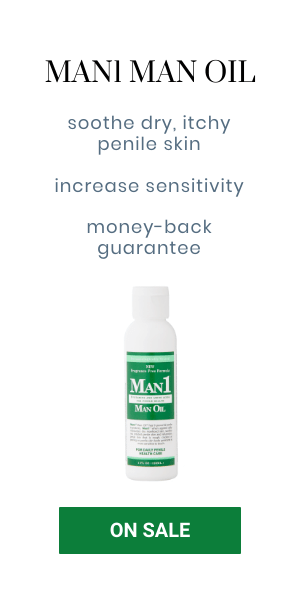Biking has a host of wonderful benefits. Not only is it an energy-efficient way to get from place to place, it’s also fantastic form of exercise. Cycling can offer the same benefits as walking and jogging, without the impact on joints that can later lead to mobility issues. But despite its good reputation, many men avoid cycling for fear of a desensitized penis.
While science supports this the concern, it’s a problem that affects only the most avid bikers. When sitting in a normal chair, weight is distributed across both buttocks equally. However, while seated on a bike seat, pressure is placed on the perineum, a region of the lower body that contains nerves and arteries that supply blood to the penis.
Men who bike dozens of miles a week may find they experience nerve damage that leads to a desensitized penis. Pressure on some of these delicate and crucial arteries can produce temporary and in the most extreme cases permanent erectile dysfunction. Studies have found that after an exceptionally long ride, men have experienced a numb penis that can last over a week.
But fear of suboptimal erectile function shouldn’t deter men from riding bikes altogether. Many simple steps can be taken to reduce the pressure that leads to penile nerve damage.
1) Seat shape: If you’re not a professional cyclist, consider using a wider seat on your bike. The racing-style seats are long with narrow nose, a shape that increases pressure on the perineum. Instead, a wider seat will distribute weight to the buttocks, alleviating that pressure.
2) Seat Height: Adjusting your seat to be the perfect height is crucial to mitigating unnecessary pressure on the perineum. When your riding and your leg is fully extended, you should still have a slight bend at the knee. A fully extended leg is not only bad for your hip joints, it also creates needless pressure. Generally speaking, while standing next to your bike, the seat should hit about at hip height.
3) Consider bike shorts: If a bulky, wide seat isn’t an option for you, consider using padded bike shorts. These can offset the pressure created by a traditional racing seat, without having to give up the aerodynamic advantages of using a thinner design.
4) Break When Symptoms Occur: If while riding you notice a tinging sensation in your groin, that’s a sign that too much pressure has been placed on the perineum. If possible, this is a good time to take a break and adjust your position. Putting yourself on alert for early warning symptoms is an excellent way to prevent irrevocable injury.
5) Recumbent Bikes: If a wide seat, bike shorts and adjusting your seat height still doesn’t mitigate numbness, you may need to rethink using an upright bike. Many gyms offer recumbent bikes, which redirects pressure from the front of the body to the back, effectively eliminating perineum pressure that building on a traditional upright model.
After a long ride, always be sure to give extra attention to your groin area given that the activity can induce pressure on the area. Showering, and deliberately cleansing the penile skin with water and mild soap is an essential post-workout step in mitigating any bacterial build up that may occur.
Men who engage in activities, like biking, that make them prone to a desensitized penis should be especially careful to apply a penis health creme (health professionals often recommend Man 1 Man Oil, which is clinically proven mild and safe for skin) after showering. The vitamins and botanicals found in Man1 Man Oil, like vitamin E and shea butter, are proven to keep the delicate penis skin in excellent, healthy condition.
